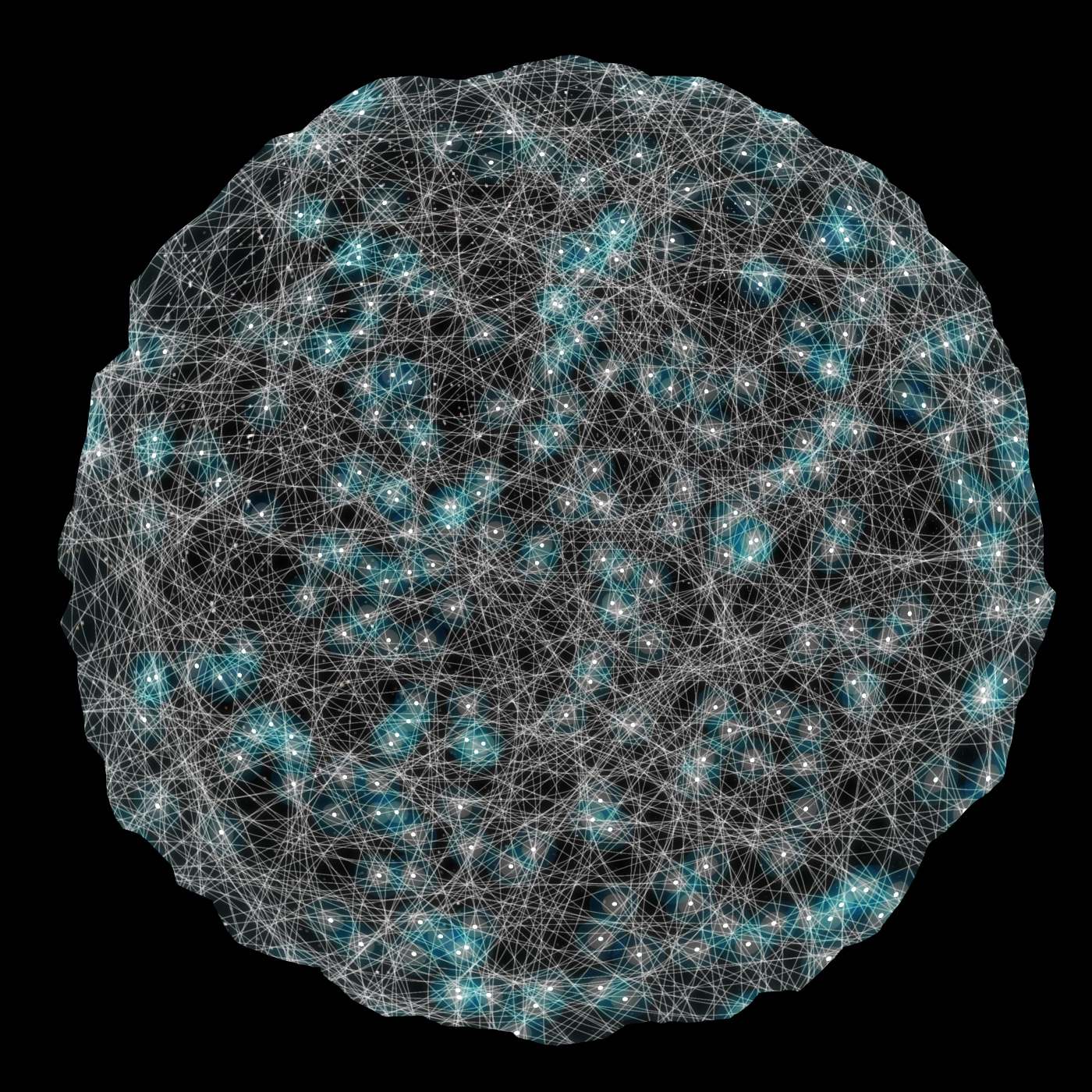
It is a busy sky, indeed. Celestial Mechanics is a artwork created by Scott Hessels and Gabriel Dunne in 2005. It presents something much closer to home than one might think. Its purpose is to show what is right above us in the skies in the forms of low orbiting satellite pathways. Every satellite, as well as weather balloons, broadcast signals and data to computers all over the world. Hessels and Dunne have compiled all of that data to create a piece of art. Celestial Mechanics was constructed to be shown in planetariums because the dome shaped auditoriums allowed viewers to become more involved in the experience than with a flat two dimensional screen. Rather than the presentations typically seen in planetariums of stars, galaxies and distant worlds, viewer are able to see the satellites fly by that give signals to their everyday objects such as their TV news or cellular phones. “In order to generate the image, the data was parsed into MEL, a scripting language used by 3D animation program Maya, which was then rendered into animation frames.” [1] With this generation of the image, the viewer is then able to follow a multitude of paths the satellites have been on, allowing one to visualize the complicated obstacle-filled space that is the skies above.
<= Left: Celestial Mechanics visualization of Low Earth Orbiting Satellites. See video below.

Aaron Koblin’s Flight Patterns is similar to Celestial Mechanics, actually being “the result of experiments leading to the project, Celestial Mechanics.”[2] Flight Patterns, however, focuses only on aircraft flights in, out, and across the United States, using differences in colors to represent altitudes, models, and manufacturers.
Aaron Koblin, Flight Patterns =>
 Although Celestial Mechanics is striking to the eye, exactly what it visualizes could be unknown and confusing upon first glance. After learning what all the lines and dots represented, it was astonishing to realize the amount of objects that are orbiting Earth, such as the Communication Satellites and the Geostationary Ring (left). The many pathways strung around the planet, yet none of them ever collide. This artwork shows how complicated the seemingly empty sky is at any given time, with never a moment of rest. This work also shows how technologies such as aircraft and satellites have helped connect the world, closing the distances between continents with tangled, yet intricate webs of lines. We have become dependent on these technologies, but are rarely able to see their full affect and coverage. Hessels and Dunne’s graceful representation of the monotonous data collected from these flight paths was all made possible through computer visual programs. Thus, computers have opened the doors to these new forms of art, as Edward Shanken claims, “Artists also used computers in order to create images that could not have been imagined or produced using traditional media”[3] or as Herbert Franke, quoting Gerhard Maurer, states in 1971, “a computer-guided multi-media programme synchronizing the development in time of corresponding elements of graphics, melody, colour, rhythm, light intensity, motion, and projection strikes [one] as an art form that might claim to have utilized the potential of modern computer technology almost to the fullest [potential].”[4]
Although Celestial Mechanics is striking to the eye, exactly what it visualizes could be unknown and confusing upon first glance. After learning what all the lines and dots represented, it was astonishing to realize the amount of objects that are orbiting Earth, such as the Communication Satellites and the Geostationary Ring (left). The many pathways strung around the planet, yet none of them ever collide. This artwork shows how complicated the seemingly empty sky is at any given time, with never a moment of rest. This work also shows how technologies such as aircraft and satellites have helped connect the world, closing the distances between continents with tangled, yet intricate webs of lines. We have become dependent on these technologies, but are rarely able to see their full affect and coverage. Hessels and Dunne’s graceful representation of the monotonous data collected from these flight paths was all made possible through computer visual programs. Thus, computers have opened the doors to these new forms of art, as Edward Shanken claims, “Artists also used computers in order to create images that could not have been imagined or produced using traditional media”[3] or as Herbert Franke, quoting Gerhard Maurer, states in 1971, “a computer-guided multi-media programme synchronizing the development in time of corresponding elements of graphics, melody, colour, rhythm, light intensity, motion, and projection strikes [one] as an art form that might claim to have utilized the potential of modern computer technology almost to the fullest [potential].”[4]
References:
[1] http://www.cmlab.com/index.php
[2] http://users.design.ucla.edu/~akoblin/work/faa/
[3] Edward Shanken, Art and Electronic Media (London: Phaidon Press Limited, 2009), 26
[4] Quoted in Edward Shanken, Art and Electronic Media (London: Phaidon Press Limited, 2009), 205
Other References:
http://rhizome.org/artbase/artwork/40291/
http://www.aaronkoblin.com/work/flightpatterns/title.jpg
